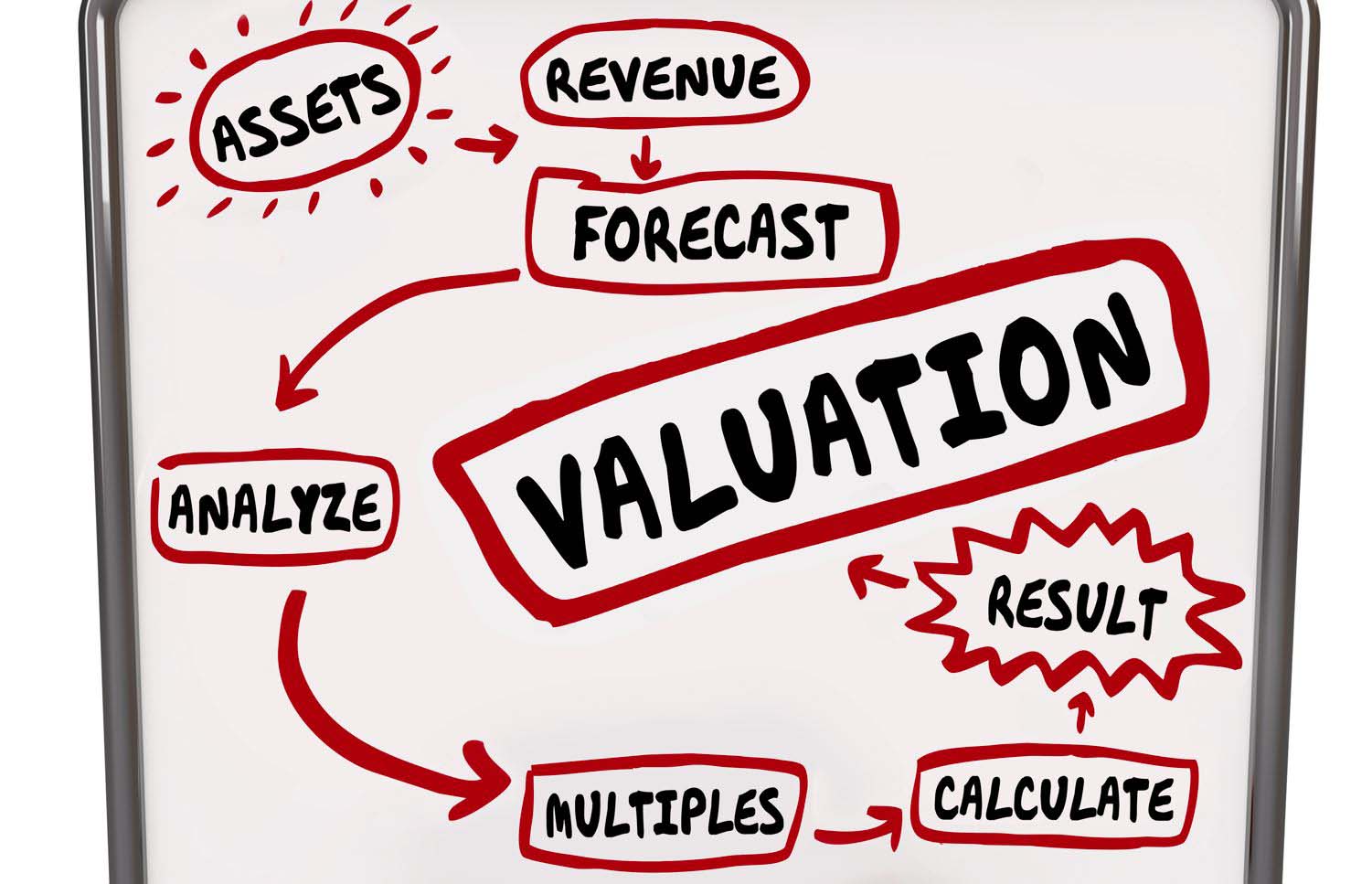Figuring out the market value of your business is crucial if you are looking to buy or sell. Regardless of what the next step is in your business journey, it is important to understand how to value your small business.
Whether the time has come to transfer ownership of your company, apply for new small business loans, or raise funding, being able to estimate the overall value of your business is a necessary skill. In fact, most financing events depend on the ability to estimate the market value of your business.
Why Determining Business Value is Important
Wherever this finds you in the lifespan of your business, you will be able to make more informed decisions once you know how to value a small business. From pricing your business for buyers to being able to successfully pitch to investors, this skill will pay dividends for you and your company.
If you are an entrepreneur, you may be familiar with the concept of valuations. A valuation is a measurement that represents the total worth of your business. If you haven’t worked with valuations before, don’t worry. You will learn to calculate your company’s market value by using a specific formula that considers your assets, earnings, the industry itself, and any incurred debts or losses.
Veteran entrepreneurs will be used to estimating business value independent of the broker or business owner’s asking price, but if selling and buying companies are new to you, feel free to supplement this article with easy-to-find online resources that can help you figure out the market value of a business.
Even if you are not currently planning to sell your business or already have accepted an offer, knowing how to determine the value of a business is still an essential skill. This knowledge can help a business owner plot out their business journey, estimate future profits and losses, and even consider future purchases and exit strategies.
Douglas Wade, Attorney
Crucial Tips that Help Determine the Market Value of a Business
The reason that entrepreneurs conduct valuations is that it is a unique opportunity to gauge the potential of a business, as well as its financial health. As a warning, valuing the business, you have put your heart and soul into can be an emotional process that is also filled with financial legwork. The key here is to stay objective, come up with an accurate number, and then move forward from there with a positive outlook. There is always room for growth and change, and this is simply the first step.
1) Understand your Valuation
Unless you are a highly-skilled mathematician or perhaps an accountant, the process of business valuation can be challenging and complex. Defining some specific terms will make this easier.
-
Seller’s Discretionary Earnings and EBITDA
EBITDA is an acronym that fundamentally represents the net profit of your business. It stands for earnings, taxes, depreciation, and amortization. If EBITDA is a familiar term, then perhaps you have already heard of Seller’s Discretionary Earnings, or SDE for short.
SDE is often calculated in order to determine the value of an individual’s business for a new owner of the company. The SDE includes such expenses as income that is reported to the IRS, non-cash expenses, and other expenses that are important to determining the true revenue that your company generates. You will also add into the SDE calculation the owner’s salary and owner’s benefits, which is different than figuring out EBITDA.
Small companies generally use SDE to evaluate value, and larger businesses use the EBITDA process. This is because owners of small businesses usually expense personal benefits. It is also important for prospective buyers to understand how SDE works. Usually, when you are looking to purchase a business, the owner will provide you with the SDE number, but it is also important to know how they came up with that number and how those values contribute to the business’s entire financial picture.
-
In Order to Calculate your Company’s SDE
Begin with your business’s pre-tax, pre-interest earnings. Next, add in the purchases that are not critical aspects of your company’s operations, such as travel costs or vehicle costs, that you still report as company expenses. Please note that you can include your own salary, one-time purchases, employee outings, charitable donations, and similar expenses in your SDE figure.
Subtract liabilities, in the form of debts or payments, from the net income. Also, be prepared for the fact that buyers will sometimes ask about the nature of your discretionary cash flow when they view your valuation, so have the information linked to major expenses/purchases prepared.
-
SDE Multiples
While the SDE is representative of the clear, monetary value of your company, the SDE multiples attribute value to your business in terms of industry standards. Generally, small companies should use an SDE. This is because most small business owners use a major percentage of their company revenue for their living expenses.
Different industries require unique SDE multiples. The SDE multiple attributed to your business relies on the risk involved in transferring ownership, market volatility, business size, location, and the number of assets.
Tip: If you already used EBITDA to evaluate the value of your business, you will use an EBITDA multiple.
2) Get an Accurate Measure of your Assets
Many people think it is unrealistic and even impossible to distill the value of an entire company into one precise figure. In some ways, they are correct: the market value of any business is known as a realistic estimate. However, when you are selling a business, a number must be assigned to it in order to ensure that you will be correctly compensated for what you have created, taking into account various types of equity.
The best way to begin is by creating a list of the resources, property, and means of production that make up your company. These include intellectual property, cash and investments, employees, assets and liabilities, and other categories depending on your industry. Be thorough and exacting in this step, as you want to present your business from the best possible angle.
Later on, you will be able to rely on this list in creating an overview or summary of your business’s value for potential buyers. At this point, it may be helpful to seek out the opinion of a financial advisor or business lawyer who can provide their own expert perspective on the worth of your business.
As a seller, you will want to follow the appropriate steps in order to inventory your business properly, including drawing up a business report outlining assets and liabilities. If you are not sure how exactly to define business assets in this case, just include anything that you think adds to the value of your company. This could be your delivery van, your intellectual property, and ideas, the machines used in the production of your products, or the equipment that you use. Whatever you find that is deemed a useful part of your company must be accounted for as either an asset or a liability. Different asset categories are valued differently in the calculation of total business value, and there are two main categories. These are known as tangible assets and intangible assets.
-
Intangible assets
Intangible assets are non-material assets. They add value to your business. Intangible assets are an important part of your SDE multiple, and it’s essential to record and identify their estimated value. These may include:
- Patents, copyrights, and trademarks.
- Customer loyalty or subscriber base.
- Brand and reputation.
- Other intellectual property.
-
Tangible assets
Assets considered tangible are the obviously valuable features of a business, such as holdings and material resources. These include:
- Equipment or means of production.
- Cash on hand.
- Real estate or property.
- Inventory or stock.
It is also important to be aware of your liabilities, which include outstanding credits or debts attributed to your business. These detract from your company’s overall value, and it is important to be aware of them. The combined number of your liabilities is subtracted from your SDE when you calculate SDE. Commonly, sellers hold onto their business liabilities and then pay off their debts after selling the company.
When you calculate your liabilities, be sure to figure in:
- Accounts payable
- Notes payable
- Other debts or payables, as well as unearned revenue
- Business loans
- Accrued expenses
Then you will want to outline and update your model and business plan. If you are selling the business, it is important to communicate to prospective buyers how your business effectively creates revenue and why it will continue to do so.
-
Business plan
A well-executed business plan can pay dividends, helping you accurately predict market growth and company earnings. Additionally, a clear plan for your business is useful in demonstrating to buyers how your business turns a profit now and why you believe it will continue to do so in the long term. A strong plan also can provide detailed insight to buyers about the business, such as company mission, key services, products or goods, and location.
-
Business model
On a fundamental level, a business model should demonstrate how your company creates profits. It may be B2B consulting, a subscription-based service, or e-commerce. While a valuation is still the suggested value of your business, the model demonstrates to potential buyers how the business is connected to its customer base. A business must show clearly how they reach their customers and, therefore, how revenue is generated.
While the pressure is on the seller to show that their business is prosperous, buyers also must contribute to this step. Buyers should make a list of their target company’s liabilities and assets and check in with the buyer to make sure they agree on the valuation. It is also a smart move to search for business plans and models that show efficient business management. Purchasing a smoothly-run, thriving business can make the transition of ownership easier, especially if you are concerned about missing out on profits in the process.
3) Organize your Business Finances
Determining the value of your company is complicated and can be time-consuming, and a professional broker, accountant, or business lawyer can help provide insight, especially if you are low on time. However, if you are determined to value your business on your own, don’t worry, it is possible, and entrepreneurs and business people do it all the time.
Before you even start the process, it is crucial to have all of your financial information organized and in good order. Your financial records provide valuable insight into the nature of your business and will be used in your calculations. Accurate records are of extreme importance, and it is never too early to update both your records and organizational skill. Your financial records are also needed in order to start the process of transferring ownership of your business.
As a seller, you will want to locate the following pieces of documentation for use in the valuation process:
- Proprietary documents, including deeds and licenses
- Tax documents, including filings and returns
- A brief overview of your personal/business finances
- Statements of profits and losses from the last three years
Make sure to add the purchases that your company reported as business expenses to the IRS (non-recurring and non-essential purchases such as your personal car or travel expenses) back to your earnings as you calculate your SDE.
For buyers, you do not need to have all of these documents ready. However, you should review your own records to get a sense of your own financial picture. Many sellers ask to see a buyer’s credit report and financial profile, to get a sense of exactly to whom they are selling.
Establishing a sturdy foundation will help you keep your financial expectations reasonable about the company you are either hoping to buy or sell. We encourage you to take these preliminary steps seriously. Take your time and go over your calculations a few times so you can be confident in moving forward with selling your business or buying a new company.
4) Do Research in Your Specific Industry
Before selling or buying a business, it is critical to determine the market value of the company. One of the best ways to do this is by familiarizing yourself with your specific industry. For a seller, a strong understanding of industry trends can inspire a more informed, confident decision. If you understand the complexities of your chosen industry, you are able to understand the market and the value of your assets in order to make a more practical valuation. For buyers, the more expert knowledge they can gather regarding the industry, the better they will feel about making a competitive and rational offer.
Sellers should also do their research and study companies that are similar in revenue, size, and business model to the business they are interested in. This is because a company’s SDE multiple and its method of valuation tend to vary based on multiple factors, such as the strength of the industry.
When buyers and sellers focus on similar businesses, you will hear them called “comps” or “comparables.” These useful comparisons can help provide context and information about the marketplace in your chosen sector. Gaining knowledge about similar companies can help with the assessment of growth potential and market share and also help sellers show buyers why their business is a smart buy.
If you are interested in finding out more about a public company, you should be able to find quarterly and annual reports online. You may also be able to see how these companies are valued and what they are selling for, depending on the business’s degree of transparency. If you are looking into the tech sector, there are directories on the web with information about investors, startups, and funding questions.
-
Small-business Evaluation: Successful Approaches
We can break down the popular business valuation processes into four basic methods, categorized by three unique approaches. Each method uses different data points for its numerical calculations, either income, assets, or market data.
When you complete your own valuation, we do not recommend you mix up these formulas. But as you go through the process, try out all the formulas and compare the results. If you struggle with the equations or do not have the time, perhaps contact an accountant.
-
Income Approach
This approach is focused on determining how much income a company can anticipate making in the future. There are two trusted methods for this:
-
Capitalization of Earnings:
This method uses company cash flow, expected value, and the annual rate of return in order to figure out the future probability. The capitalization method presumes that calculations over a single time period will continue, as opposed to the next method we will look at, which accounts for more variations in a company’s economic future. This method is usually used by established businesses that have recorded stable profitability.
-
Discounted Cash Flow Method:
This method is focused on the current value of a company’s future cash flow. Therefore, the cash-flow prediction is adjusted based on the risks involved in buying the company. This method is usually used by newer businesses that have significant potential for growth but are not profitable yet.
The majority of online valuation calculators utilize some variation of the income approach, but if you have more financial information about the business, there are other more comprehensive tools. These tools will include assets, liabilities, revenues, and profits in what is a complete calculation.
-
Asset-driven approach
The asset-drive approach is a widely-used method that values a business based on its assets. The Adjusted Net Asset Method evaluates the disparity between a company’s assets (intangible assets, property, inventory, equipment) and its liabilities. Both of these figures are adjusted to fair market values.
This type of asset valuation is an excellent tool to be used internally as well, and it can help business owners stay on top of capital resources and spending.
In order to complete an assessment that is predicated on assets, begin by making a list that includes all of your assets and their monetary values. The value of depreciating assets and equipment is generally between the depreciated value and the sale price. A solid approach is to approximate the value of a piece of equipment today and then use that number in your calculations.
It should be relatively easy to produce accurate estimates of your asset’s value and potential to depreciate since you are familiar with your own business products and equipment. Your result should provide a solid sense of the company’s material value, even without adjusting the asset’s worth based on the current market.
This method is helpful if your business usually holds real estate or investments, if you are seeking to liquidate, or if your business is not profitable currently. Prospective buyers will want to know the value of your equipment and/or investments in these cases.
-
Market Approach
The market approach to valuing a company uses the sales and purchases of similar companies to determine the business’s value. Specifically, the market approach is beneficial in determining the selling or purchase price based on the local market.
Any company can use this method; they just need to gather enough relevant data to make it a worthwhile comparison study. This approach is a good choice for quickly growing businesses in fast-moving industries, such as tech.
Good Luck in Determining Your Business Value
We hope you feel more prepared to determine the market value of your business now. If you need help or have questions, contact one of our business and corporate lawyers at Nakase Wade for more guidance.



